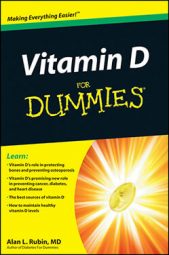Many of the best sources of calcium are also good sources of vitamin D, especially dairy foods such as milk, yogurt, and cheese. Other good sources are fortified cereals, tofu processed with calcium, enriched farina, almonds, dried beans, and soybeans.
The table lists the best sources of calcium to include in your diet.
| Food | Milligrams of Calcium |
|---|---|
| 1 cup plain, low-fat yogurt | 415 |
| 1/4 cup nonfat, dry milk | 377 |
| 3 oz. canned sardines with bones | 372 |
| 1 oz. calcium-fortified cereal with 1/2 cup milk | 350 |
| 1 cup fruit-flavored, low-fat yogurt | 345 |
| 1/4 cup grated Parmesan cheese | 338 |
| 1 cup skim milk | 302 |
| 2 calcium-fortified waffles | 300 |
| 8 oz. orange or grapefruit juice | 300 |
| 1 oz. Swiss cheese | 272 |
Research shows that most women consume less calcium than is recommended. This is probably because women view calcium-rich dairy products as fattening. Regardless, women who don’t like calcium-rich foods are advised to take supplements.
One hint about taking calcium supplements — you don’t absorb calcium efficiently if you take a supplement with the entire requirement at a time, so rather than take a large amount at one time, the recommendation is to take 500 mg of calcium twice daily.
Take your calcium supplement with a meal; it’s easier to remember that way. More importantly, the acid released in response to food breaks the calcium tablets down into a form that makes them more readily absorbed. Also, eating food with your supplement causes fewer side effects, like bloating and gas. Take combined calcium and vitamin D to make sure you benefit from both.
Vegetarians may have difficulty meeting the daily requirements for vitamin D and calcium if they avoid dairy foods. Consider these suggestions for vegetarians:
If you drink fortified nondairy milk, shake the milk: the calcium added to these products settles to the bottom.
The body readily absorbs calcium in kale, broccoli, collard greens, and soy milk.
The body poorly absorbs calcium in spinach, Swiss chard, and beet greens. (Chemicals in these foods tie up the calcium and prevent it from being absorbed.)

